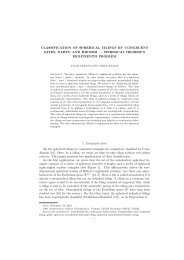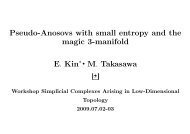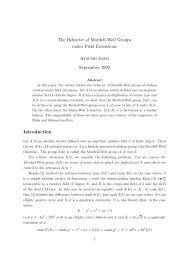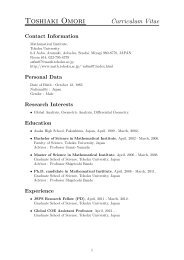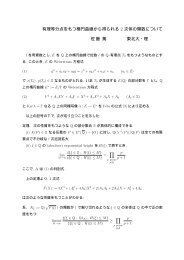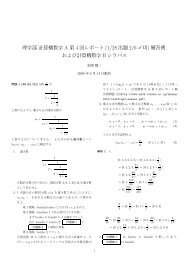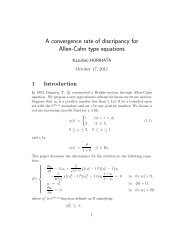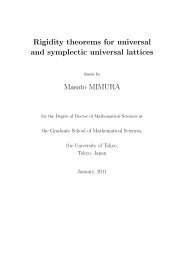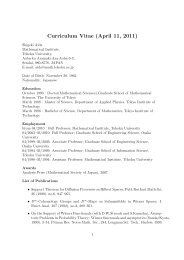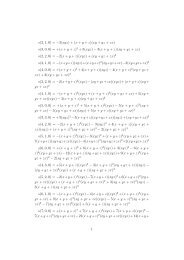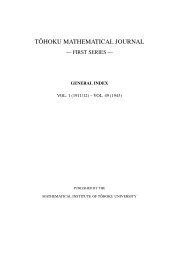Constructions of harmonic maps between Hadamard manifolds
Constructions of harmonic maps between Hadamard manifolds
Constructions of harmonic maps between Hadamard manifolds
You also want an ePaper? Increase the reach of your titles
YUMPU automatically turns print PDFs into web optimized ePapers that Google loves.
2.3. CONSTRUCTIONS OF EQUIVARIANT HARMONIC MAPS 55<br />
then M and N are smooth Riemannian <strong>manifolds</strong> diffeomorphic to Euclidean space.<br />
Let ϕ : S m → S n be an eigenmap with 2e(ϕ) =µ 2 . Then a product map u(t, x) =<br />
(r(t),ϕ(x)) is a <strong>harmonic</strong> map if and only if r = r(t) is a solution to the following ordinary<br />
differential equation:<br />
f(t)<br />
(2.2.4) ¨r(t)+m ˙<br />
f(t)ṙ(t) − h(r(t))h′ (r(t))<br />
µ2 =0.<br />
f(t) 2<br />
In order for u to be continuous, we require that r = r(t) satisfies<br />
lim r(t) =0.<br />
t→0<br />
Then Theorem A and Theorem B in Chapter 1 imply the following result.<br />
Theorem 2.3.3. Let f = f(t) and h = h(r) be smooth functions on [0, ∞) and R, respectively.<br />
Assume that f and h satisfy the following conditions:<br />
⎧<br />
f(0) = 0, f(0) ˙ = 1, f(t) > 0 and f(t) ˙ ≥ 0 for t>0,<br />
⎪⎨<br />
f(t)<br />
0 ≤ m ˙<br />
∫ ∞<br />
f(t) − 1 for t ≥ 0, dt<br />
f(t) < ∞,<br />
⎪⎩ h(0) = 0, h ′ (0) = 1, h(r) > 0 for r>0 and (h 2 ) ′′ (r) ≥ 0 for r ∈ R.<br />
Then, if there exists an eigenmap ϕ : S m<br />
<strong>harmonic</strong> map<br />
→ S n , then we can construct an equivariant<br />
u : ([0, ∞) × S m ,dt 2 + f(t) 2 g S m) ∋ (t, x) ↦→ (r(t),ϕ(x)) ∈ ([0, ∞) × S n ,dr 2 + h(r) 2 g S n).<br />
<strong>maps</strong>.<br />
As applications <strong>of</strong> this theorem, we now illustrate few examples <strong>of</strong> equivariant <strong>harmonic</strong><br />
Case 1.<br />
Let f(t) = sinh t and h(r) = sinh r. Then M and N are isometric to the real<br />
hyperbolic spaces <strong>of</strong> dimension m + 1 and n +1, respectively. Since these f and h satisfy<br />
the conditions in Theorem 2.3.3 and<br />
∫ ∞<br />
dr<br />
h(r) < ∞,



